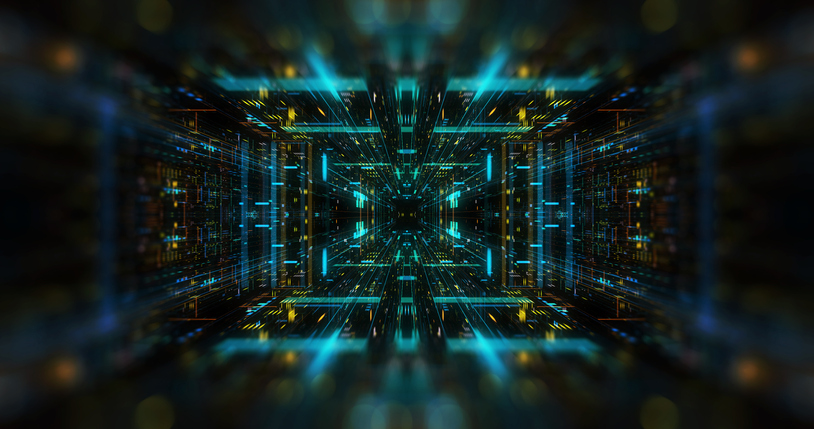The revolution in artificial intelligence (AI) is no more a secret now. Deep-learning-based AI is permeating every aspect of our everyday lives, from healthcare to automotive applications, preventative maintenance to global climate forecasting and prevention, emergency management to terrorist attack prevention. AI is a widely used technology that has now made its ways towards software and computing.
Classical computing practices has been somehow resembles to human brain functioning. The human brain uses a fraction of the energy of a computer. Therefore, in order to create cutting-edge computer technology, scientists are taking inspiration from how the brain and its network of linked neurons works. They anticipate that these brain-inspired computer systems will be more energy-efficient than current ones and execute machine learning tasks more effectively. From here, they develop the notion of incorporating a brain-like system into virtual words, which forms the basis of quantum computing and aids in the development of memristors.
The emergence of memristors devices and their underlying hardware systems is expected to enable the fast development of applications for artificial intelligence (AI), big data analytics, cloud computing, and the Internet of Things while consuming little power and taking up little chip space.
This article is about memristors and how do they work? Let’s just get started.
What are Memristors?
Its unique characteristic is the ability to configure its resistance (resistor function), which then stays saved (memory function). Memristors are stable memories that retain their state even if a device loses power, unlike other memories used in modern electronics. The first useful gadget, however, wasn’t created until over 40 years later. In 2008, a team at HP Research Labs lead by Stanley Williams recognized that the Leon Chua memristors behavior in metal-oxide thin-film devices was caused by altering the resistance between a conducting and less conducting state.
Since then, there has been a significant amount of study in the area and the field has swiftly expanded. Memristors devices have recently attained extremely high levels of durability (120 billion cycles) and retention (10 years or more), and ultrahigh density crossbar arrays, including multiple layer stacking, have been created with scalability down to 2-10 nanometers.
For computer scientists, memristors are fascinating due to a number of appealing features: They can store at least twice as much data in the same space and work more efficiently than current solid-state storage systems. Radiation, which may impair transistor-based devices, has little effect on memristors. Memristors can also make it possible for computers to flip on and off like a light switch.
Works As a Brain Synapses
Complex problems, like image recognition and data classification, are better solved by the human brain than by conventional computers. A brain’s ability to perform complex tasks well is due to the numerous neurons and synapses that process information concurrently. when an electrical signal is transmitted between two neurons via axon and synapse, the joint strength or weight is adjusted by the synapse. Due to scalability, low power operation, non-volatile features, and small on-chip area, memristors are good candidates for artificial synaptic devices to mimicking the LTP, LTD, and STDP behaviors.
Competition and cooperation among synapses have been claimed to be crucial by neuroscientists. Memristive devices have already been created by researchers, enabling them to accurately simulate these synaptic characteristics in a solid-state system.
The researchers speculate that photonic neuromorphic computing systems may one day be created using quantum memristors. Neuromorphic computing implies efficiency and capability similar to the brain. Theoretically, these neuromorphic machines would be able to immediately understand their surroundings and break down hurdles to make quick judgments.
A quantum memristors is eagerly sought after since one of the ongoing difficulties with quantum computing has been storing enormous quantities of data. In order to break through this memory barrier and bring neuromorphic computing systems closer to reality, it appears that photonic memristors technology may be the solution.
Neuronlike Memristors would enhance 6G Speeds
In 2020, 5G, the newest generation of wireless communications, started to roll out. Initial 6G deployment is not anticipated to occur until approximately 2030, and as no standards have been set for it yet, much is still unknown about the form that it may take. Nevertheless, many anticipate terabit-per-second data speeds for 6G as well as uses for the technology that include immersive telepresence, augmented reality, and self-driving cars.
The analogue switch is a crucial component that probably needs to be upgraded for 6G. Traditional analogue switches made of transistors or solid-state diodes are unstable and use energy not just when they switch but also while they are in standby or even when they are not in use. Researchers are investigating nonvolatile memory devices as substitute analogue switches in an effort to significantly cut total energy usage. These include phase-change memory, resistive random-access memory (RRAM), two-dimensional atomristors, and neuronlike memristors (PCM). Nonvolatile analogue switches made of molybdenum disulfide have been created by researchers. These switches can function at frequencies between 100 and 500 GHz, which is the range of frequencies that 6G is most likely to use.
The new switch could engage in data communication at rates of up to 100 gigabits per second at a frequency of 320 GHz, with a low bit error rate and a high signal-to-noise ratio. This metal-insulator-metal structure behaves like a memristors, or memory resistor, a type of building block for electronic circuits. Additionally, it was able to broadcast 1.5 Gb/s of uncompressed, real-time, high-definition video at a frequency of 300 GHz. It was more than an order of magnitude faster than equivalent mature systems, switching in just 50 Pico joules, or less than half a millisecond.
